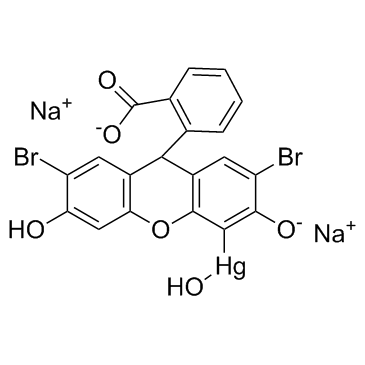Otomycosis in Nigeria: treatment with mercurochrome.
N Mgbor, H C Gugnani
Index: Mycoses 44(9-10) , 395-7, (2001)
Full Text: HTML
Abstract
Seventy-two mycologically proven cases of otomycosis (38 males, 34 females) aged 8-80 years were investigated. Aspergillus niger was the commonest aetiological agent (43.1%) followed by Candida spp. (22.2%), A. flavus (19.4%) and A. fumigatus (15.3%). Three topical drugs, namely mercurochrome, clotrimazole and locacorten-vioform, were evaluated for otomycosis therapy in separate groups of 24 patients each. Mercurochrome was found to be the most efficacious in terms of healing, relief from symptoms of the disease and production of negative fungal cultures. Mercurochrome is recommended as a safe and economical drug for the topical treatment of otomycosis in developing countries like Nigeria.
Related Compounds
| Structure | Name/CAS No. | Molecular Formula | Articles |
|---|---|---|---|
 |
Merbromin
CAS:129-16-8 |
C20H10Br2HgNa2O6 |
|
Effect of three different motivational techniques on oral hy...
2011-09-01 [Angle Orthod. 81(5) , 884-8, (2011)] |
|
Chronic bilateral otomycosis caused by Aspergillus niger.
2004-02-01 [Mycoses 47(1-2) , 82-4, (2004)] |
|
Merbromine-induced pustular contact dermatitis.
1999-04-01 [Contact Dermatitis 40(4) , 219, (1999)] |
|
Otomycosis--a clinico-mycological study and efficacy of merc...
1996-01-01 [Mycopathologia 135(1) , 9-12, (1996)] |
|
Fluorimetric study of interaction of merbromin with trypsin.
2008-10-01 [Spectrochim. Acta. A. Mol. Biomol. Spectrosc. 70(5) , 1109-13, (2008)] |